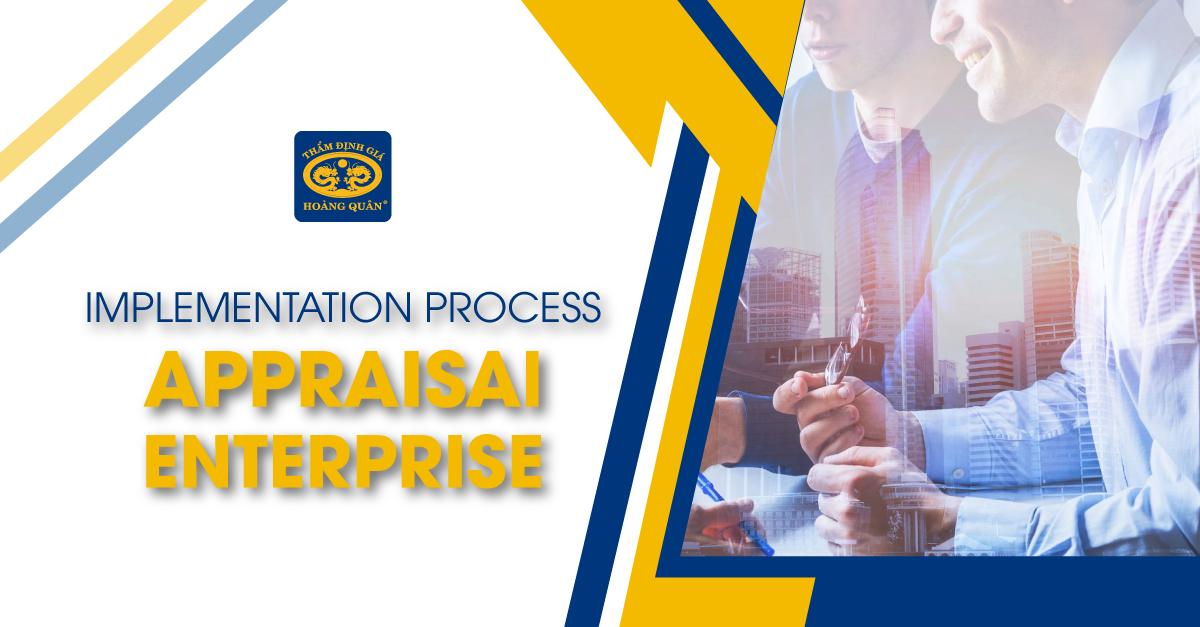Enterprise valuation process consists of 6 steps:
1 / Identify the problem
In this step, pay attention to the following issues:
- Set up valuation purposes
- Preliminary identity of the business that needs valuation: legal, type, size, location, facilities, branches, assets, products, brands, markets, ...
- Determine the valuation basis of valuation
- Identify documents required for appraisal of prices
2 / Planning price appraisal
- Planning price appraisal to clearly define the steps to be done and the time to perform each step of work as well as the entire time for the valuation.
- The contents of the plan must show the following basic tasks: Determining the factors of supply and demand appropriate to the functions, characteristics and rights associated with the business being traded and market characteristics; Identify documents to collect about the market, the business, and the comparison documents; Identify and develop resources, ensure they are reliable and verifiable; Develop research progress, determine the order of data collection and analysis, the permissible time limit for the sequence to be performed; Outline of price appraisal report.
3 / Explore businesses and collect documents
In this step it should be noted:
- Field survey in enterprises: inventory of assets, survey of the actual production and business situation of enterprises.
- Collection of information is first of all information and documents from within the enterprise: documents on business and production situation, financial - accounting - auditing reports, production unit system and management, characteristics of management staff, employees, workers, ... Also pay attention to collecting information outside the enterprise, especially the companys product market, business environment, industry business, competitors, government policies, etc. The appraiser should take the necessary steps to ensure that all data sources as a base are reliable and consistent with appraisal. It is common practice in the marketplace for examiners to take reasonable steps to verify the accuracy and reasonableness of resources.
4 / Evaluate the strengths and weaknesses of the business:
It is necessary to evaluate the strengths and weaknesses of enterprises on the following aspects: production and business, technological equipment, workmanship, management apparatus and management capacity, debt capital, financial indicators. , market, business environment.

5 / Determine valuation methods, analyze data, documents, and estimate business value.
Enterprise price appraisers based on opinions, work results of other appraisers or other experts are necessary when appraising business prices. A common example is using real estate valuation results to value real estate assets owned by a business. When relying on the opinions or results of other appraisers or other experts, the corporate valuation appraiser should conduct verification steps to ensure that those services are performed in a professional manner, reasonable and reliable conclusions.
- Type of business organization
- Business history
- Prospects for the economy and for the industry
- Products, services, markets and customers.
- Sensitivity to seasonal or cyclical factors
- Competition
- Supplier
- Assets include tangible and intangible assets
- Human
- Manage
- Owned
- Prospects for business
- Past transactions of similar ownership interests in the business.
4. Valuation methods: Valuation methods and the reasons for applying these methods; calculations and logic in the application of one or more valuation methods; the derivation of variables such as discount rates, capitalization rates or other validation factors; arguments when summing up different valuation results to have unique validity results.
5. Assumptions and limitations when it comes to valuation, and important premisees and assumptions about the value must be stated.
6. If there is a certain aspect of valuation to be used against the provisions of the standards or guidelines that such application deems necessary and appropriate, the content, the reasons due to application should be clearly stated in the report.
- Summary of asset summary sheet and income statement for a certain period in accordance with the purpose of valuation and business characteristics.
- Adjustments to the original financial data (if any).
- Basic assumptions for formulating balance sheets and income statements.
- The companys financial performance over time and comparison with similar businesses.
9. Scope and term of price appraisal.
10. Signatures and certifications: appraisers and signers of price appraisal reports are responsible for the contents implemented in the reports.

